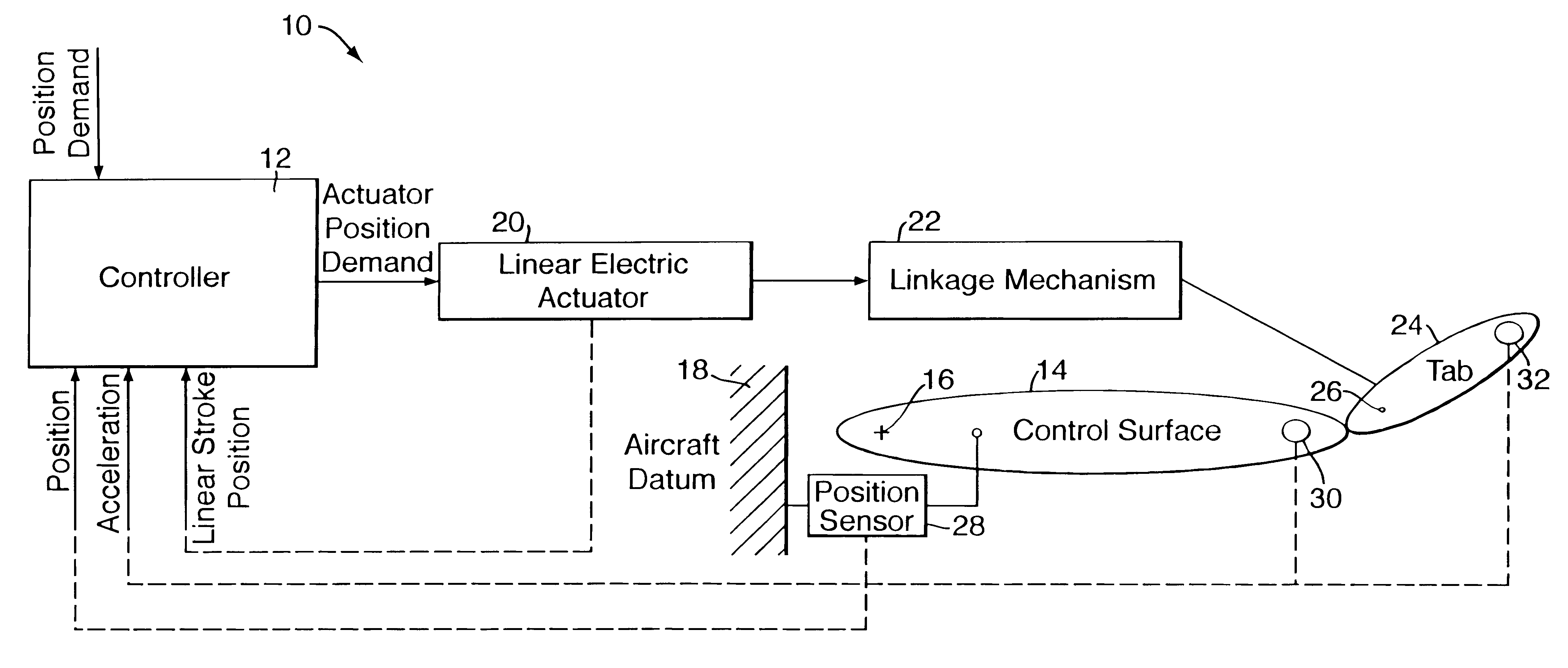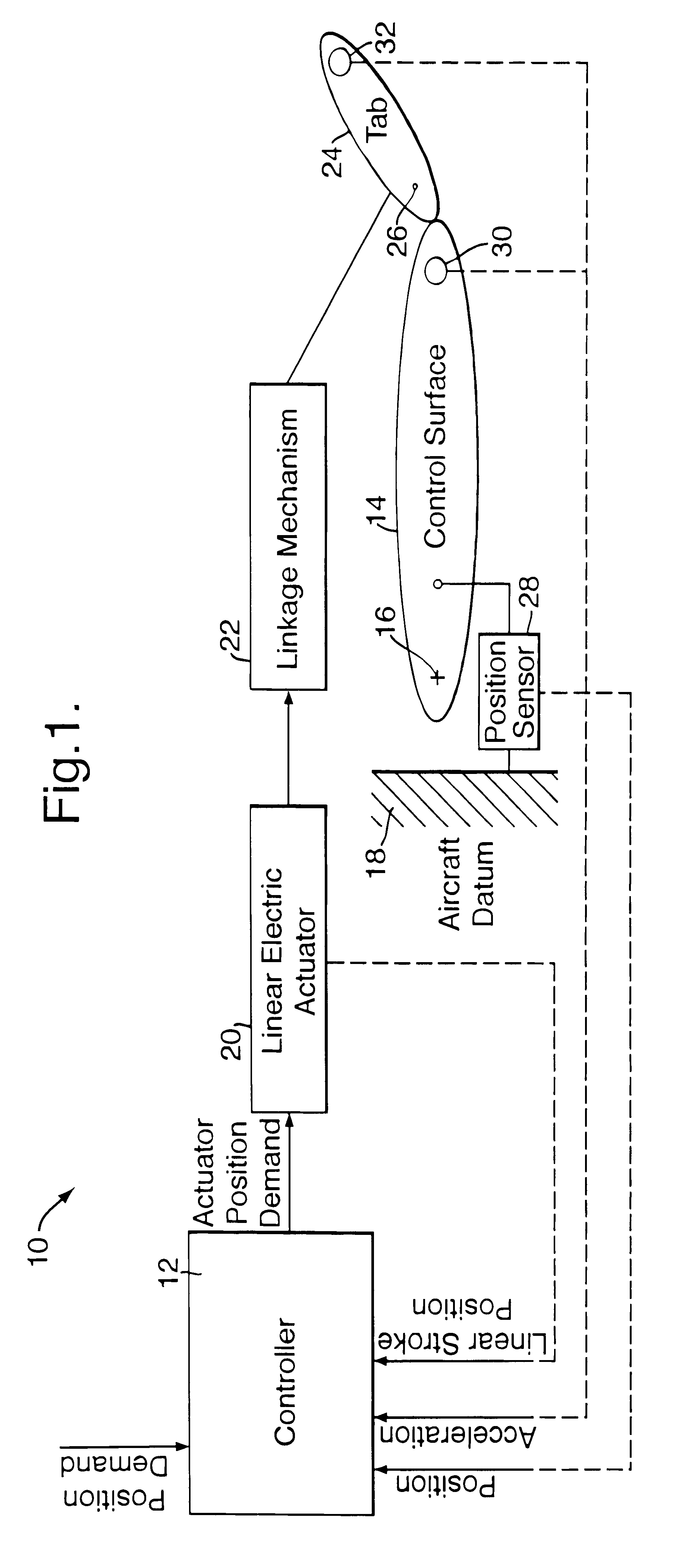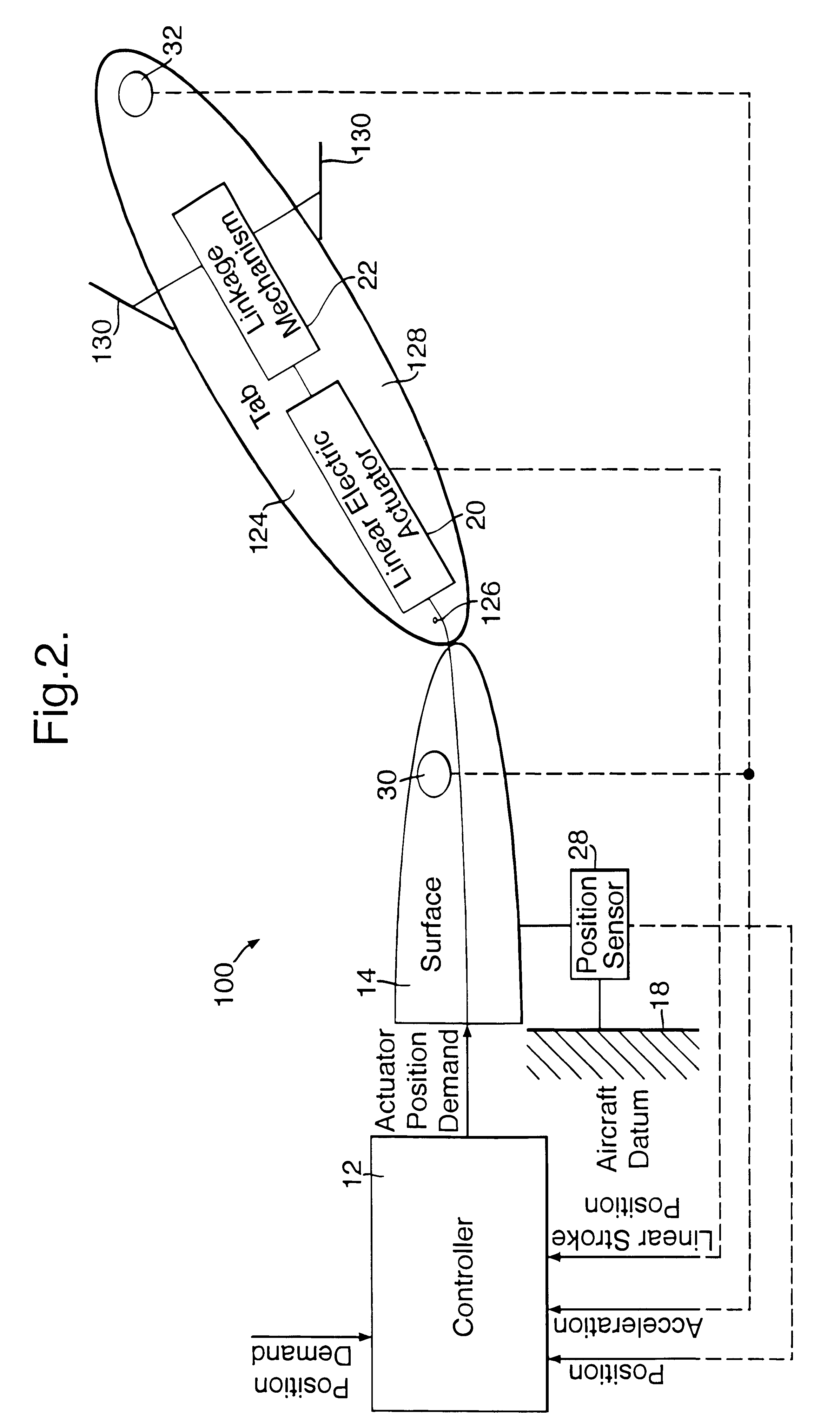Actuator system for aerospace controls and functions
a technology of aerospace control and actuator system, applied in the direction of automatic actuation, position/direction control, aircraft transmission means, etc., can solve the problems of relative oscillatory movement between, use of control tabs, and potential shock wave problems at aircraft velocities approaching sonic conditions,
- Summary
- Abstract
- Description
- Claims
- Application Information
AI Technical Summary
Benefits of technology
Problems solved by technology
Method used
Image
Examples
Embodiment Construction
Referring initially to FIG. 1, this shows an actuator system 10 according to the present invention for operating an aircraft control surface, such as the ailerons, the wing leading edge and trailing edge flaps and slats, or flaperons, the elevators, the spoilers or the rudder. In the present instance, the control surface is an aileron or flaperon.
As shown, the actuator system 10 comprises a controller 12, which may be a part of the flight control computer or which may be a part of another aircraft system. The controller 10 is located within the frame of the aircraft for operating a control surface 14 attached by a main pivot 16 to a wing 18 of the aircraft. The pivot 16 is appropriately placed relative to the control surface 14 to provide a balanced mounting for the surface 14.
The controller 12 is connected to an electric actuator 20 in the form of a linear electric motor, wherein the shaft and armature comprise a moving slide or carriage running on an air gap above a flat stator. T...
PUM
 Login to View More
Login to View More Abstract
Description
Claims
Application Information
 Login to View More
Login to View More - R&D
- Intellectual Property
- Life Sciences
- Materials
- Tech Scout
- Unparalleled Data Quality
- Higher Quality Content
- 60% Fewer Hallucinations
Browse by: Latest US Patents, China's latest patents, Technical Efficacy Thesaurus, Application Domain, Technology Topic, Popular Technical Reports.
© 2025 PatSnap. All rights reserved.Legal|Privacy policy|Modern Slavery Act Transparency Statement|Sitemap|About US| Contact US: help@patsnap.com



